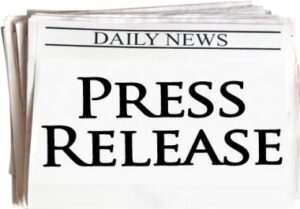Press release distribution can be a highly effective way to share your company’s news and boost its visibility. However, there are common mistakes that can derail even the most newsworthy announcement. Understanding these pitfalls and how to avoid them is key to ensuring your press release gets the attention it deserves. Here are some of the most common mistakes businesses make in press release distribution.
One of the biggest mistakes is failing to target the right audience. Sending your press release to media outlets and journalists that don’t cover your industry is a waste of time and resources. You need to take the time to research which publications and reporters are interested in your field of work. Tailoring your press release distribution to the right outlets ensures that your news is reaching an audience that will actually care about it. Without this step, even the best press release will likely fall flat.
Another common mistake is overloading your press release with too much information. A press release should be concise and to the point. Journalists are busy and typically skim through press releases, so if yours is packed with unnecessary details, it might get skipped over. Focus on the most important points and keep the press release under 500 words. Stick to the key facts that are essential to understanding the story.
Neglecting to proofread is another mistake that can severely impact your credibility. Typos, grammar mistakes, and unclear sentences can make your press release look unprofessional. Journalists won’t take a poorly written press release seriously, and it could hurt your brand’s reputation. Always double-check your work or have someone else proofread it before you hit send.
Many companies also make the mistake of not following up after distributing a press release. Sending the press release is only the first step; following up is often necessary to ensure it gets noticed. Journalists receive hundreds of emails daily, so your press release might get lost in the shuffle. A polite follow-up email can bring your press release back to their attention and increase your chances of getting coverage. However, be careful not to spam journalists with multiple follow-ups, as this can have the opposite effect.
Another significant mistake is ignoring SEO when writing and distributing your press release. Including relevant keywords and phrases can help your press release rank higher in search engines, making it easier for journalists and potential customers to find. Make sure to incorporate SEO best practices without overstuffing your content with keywords, as that can make it look unnatural.
Finally, failing to include a clear call to action is a mistake that many businesses overlook. Every press release should end with a clear instruction on what you want the reader to do next. Whether it’s visiting your website, contacting your company for more information, or attending an event, a call to action gives direction to your readers.
By avoiding these common mistakes, you can ensure that your press release distribution efforts are more successful and that your news gets the attention it deserves.











